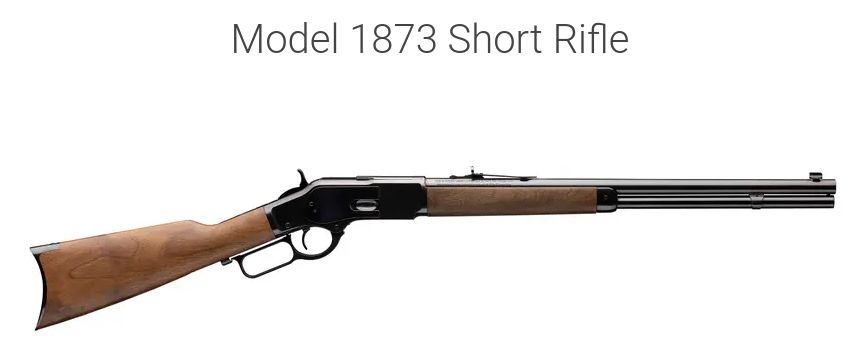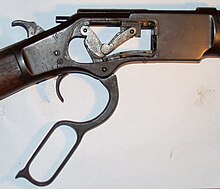
Family
Cookbook
Travel
Guns
Teach
Cartridges
Rifles
Handguns
Shotguns
Shooting Skills
Maintenance
General Information
Links
Winchester

 |
Manual |
Disassembly/Assembly
|
||||||||||||||||||||||||||||||||
| Single Action Trouble Shooting |
|
|||||||||||||||||||||||||||||||||
| A Brief Winchester Lever Action Rifle Chronology and History | ||||||||||||||||||||||||||||||||||
|
||||||||||||||||||||||||||||||||||
The Model 1873 was one of the most successful Winchester rifles of its day, with Winchester marketing it as "The Gun That Won the West". Still an icon in the modern day, it was manufactured between 1873 and 1923. It was originally chambered for the .44-40 cartridge, which was the first centrefire cartridge and which became immensely popular. The 1873 was later produced chambered for .38-40 and .32-20, both of which would become popular handgun cartridges of the day, allowing users to carry just one type of ammunition. The Model 1873 was produced in three variations: a 24-inch (61 cm) barrel rifle, a 20-inch (51 cm) barrel carbine, and a 30-inch (76 cm) "musket" – which was aimed at military contracts and only made up less than 5% of production. (Musket was a term that, at the time, denoted a full-length military-style stock, not to be confused with a true smoothbore musket). The standard rifle-length version was most popular in the 19th century, although Winchester would make rifles to order in any configuration the customer wished, including longer barrels or baby carbines with barrels as short as 12 inches (30 cm), octagonal-shaped barrels, color case-hardened receivers and fancy engraving.
The original Model 1873 was never offered in the military revolver .45 Colt cartridge, but a number of modern reproductions are chambered for the round.
To both celebrate and enhance the Model 1873's prestige, Winchester established a coveted "One of One Thousand" grade in 1875. Barrels producing unusually small groupings during test-firing were fitted to rifles with set triggers and a special finish. Marked "One of One Thousand", they sold for a then pricey $100 (equivalent to $2,700 in 2022).[28] A popular 1950 Western starring James Stewart, Winchester '73, was based on the coveted gun. Promotions included a search for "One of One Thousand" rifles by Universal Studios, with advertisements in sporting magazines and posters in sporting goods stores.[29]
A second grade of Model 1873 barrels producing above average accuracy were fitted to rifles marked "One of One Hundred", and sold for $20 over list. Approximately 136 "One of One Thousand" Model 1873s were sold, and only eight "One of One Hundreds".[29]
In all, over 720,000 Model 1873s were produced up until 1923. With a return to popularity due to present-day Cowboy action shooting, '73 rifles and carbines of a high quality have been made in Italy by Uberti, encouraging a return to production under license from the Olin company in 2013, joining the Model 1892 and the Model 1894 being manufactured in Japan by the Miroku Corporation for FN/Browning. Nearly faithful in design to the original, including the trigger disconnect safety, sliding dustcover, and a crescent-shaped buttplate, it incorporates two safety improvements: a firing pin block preventing it from moving forward unless the trigger is pulled, and a cartridge carrier modification to eject used casings away from the shooter.[30]
In 2014, a weathered Model 1873 was found leaning against a tree in Great Basin National Park. It became known as the Forgotten Winchester and sparked media interest because of the mystery about who left it there and why they never came back for it.[31]